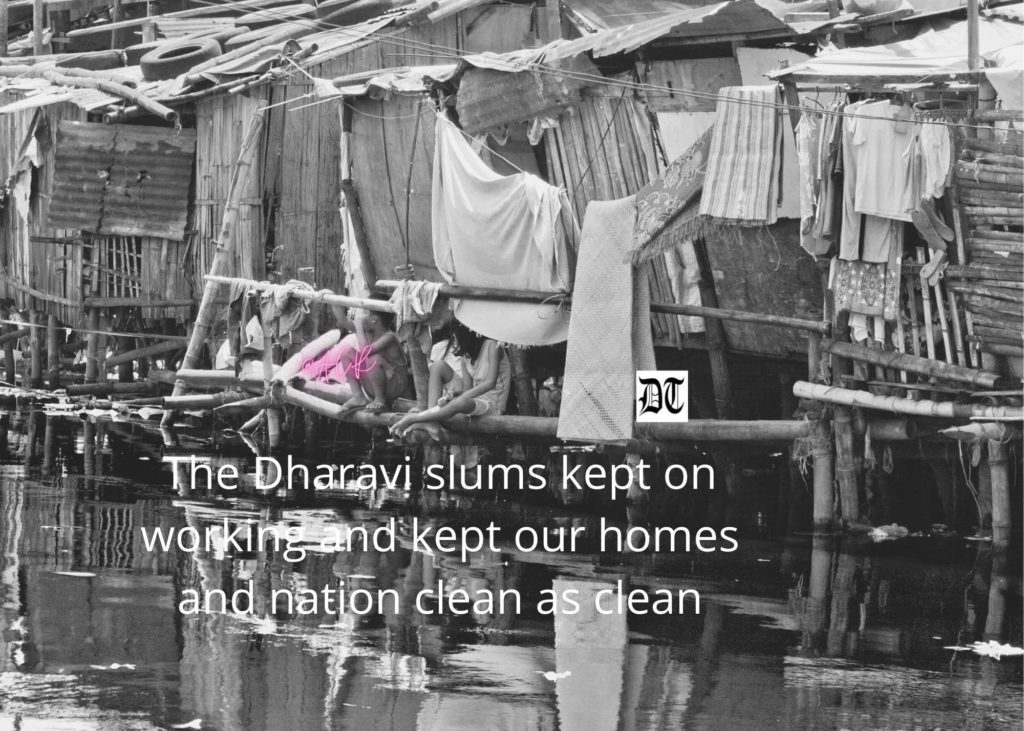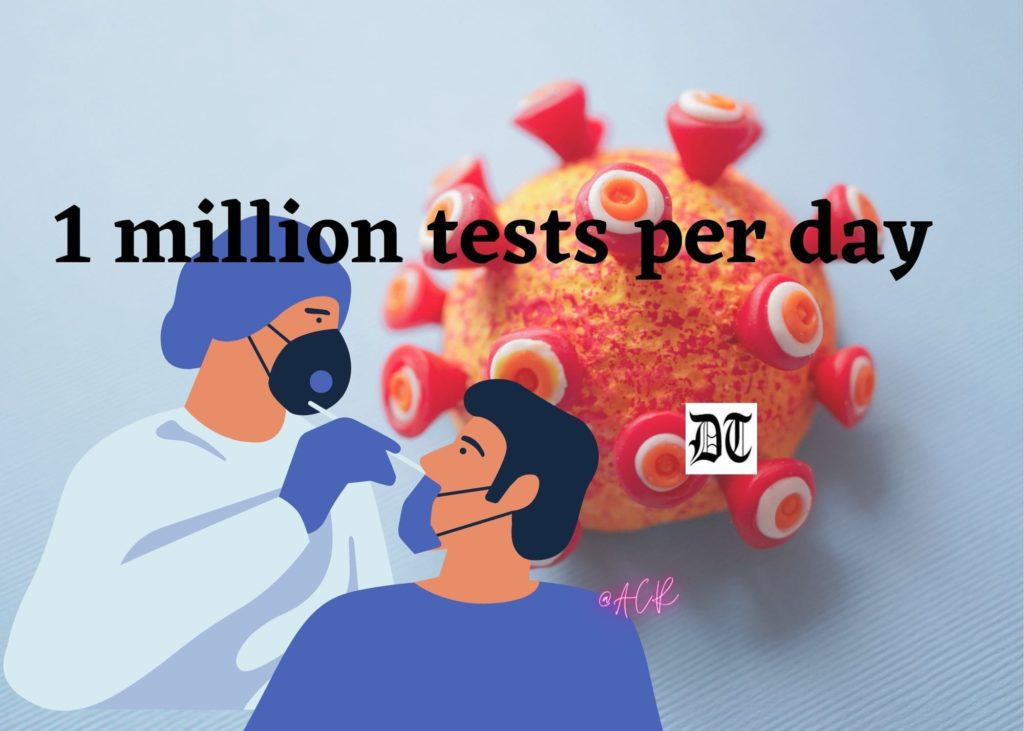Reading Time: 9 minutes
Experts speculate that several factors are likely behind the decline in India’s case numbers, such as the country’s younger population or the possibility of rising immunity in urban areas. The poor man pandemic figures nowhere in national numbers, elucidates Dr Kulmeet. An exclusive for Different Truths.
The poor masses of India have yet again emerged as the wall between the virus and the rich. As our masters clamped down the nation in the last week of March 2020, we saw the poor workers left in the lurch. They were with no means of livelihood, nobody to turn to for any succour. They collected their meager belongings, ample families and started trooping towards their villages. This migratory walk of the migrants was not hit by Covid – anywhere remotely near the pandemic level it achieved elsewhere.
There is no poor man’s pandemic depicted in national numbers despite gatherings of this vast a magnitude…
Elections in Bihar and now in Bengal see crores of people coming to hear their beloved barricaded, at a distance leader(s). There is no poor man’s pandemic depicted in national numbers despite gatherings of this vast a magnitude, as we watch our home minister and a host of other celebrities getting admitted in all the major hospitals. The farmers collect in huge numbers in Delhi, Haryana, Uttar Pradesh, Rajasthan, and Maharashtra. No major shift in numbers occurs loco-regionally pertinent to Covid statistics.
The rich folks get decided to get married in hordes (auspicious stars foretelling future matrimonial bliss led to 30,000 weddings being solemnised in Delhi on 16th February). The numbers of Covid start hitting North. It is not even a week yet my friends.
The Dharavi slums, the slums all over the country, the rickshaw pullers, our maids, safai karamcharis kept on working and keeping our homes and nation clean…

The Dharavi slums, the slums all over the country, the rickshaw pullers, our maids, safai karamcharis kept on working and kept our homes and nation clean as clean as it normally is.
The industry ground to a halt. As opposed to the developed and the developing world, our industrial workers have a very disorganised wage and employment structure. This led to a prospect of looming starvation and subsequent deaths.
Covid related miseries in the U.S. of A, Sweden, Germany, Australia, Taiwan, and Brazil are relatable to the cohesion in methodology used to combat the disease.
The initial glaring blunder was the inability to check the spread of disease.
The initial glaring blunder was inability to check the spread of disease. That the Chinese were allowed to cancel the domestic flights from Wuhan and continue with international flights around the world at peak international Chinese travel time – their New Year’s, can be considered subterfuge of doctored facts and pliable gullibility of the international community of experts, who were hand in glove in this camouflage. This is obvious. As obvious as the fact a million and one fact finding committees shall now find no one is at fault or was at fault.
The acts of international fact-finding committees are often the end result of hilarious politics and arm twisting. As the world stands today – China is unbeatable. No internal political threat and massive financial clout internationally makes the weak and weakened world amenable to arm twisting.
The Postulated Genesis of the Indian Mystery of Marked Decrease of Cases and the Impending Crisis in Coming Months
Six months ago, India was in crisis. Critically ill Covid-19 patients were being turned away from hospitals. Doctors were collapsing from exhaustion. And the virus was spreading through crowded slums, home to millions of the country’s poorest people.
Today, the country looks vastly different. Daily new cases have plummeted, dropping from a peak of over 90,000 infections in September down to just over 10,000 a day in February. On February 9, the capital Delhi reported zero virus deaths for the first time in nearly nine months, according to COVID19INDIA, a website that crowdsources Covid-19 data from official sources.
This has all happened without drastic measures such as circuit-breaker lockdowns, which have been used in places like New Zealand and Australia to get outbreaks under control. The Indian government is still implementing certain social distancing restrictions and has scrambled to assist overstretched hospitals – but the economy has reopened, domestic travel has resumed, and people are largely going about their daily lives.
The recovery likely isn’t due to vaccinations, either. India has started its vaccination program… but it’s still lagging compared to wealthier nations.
The recovery likely isn’t due to vaccinations, either. India has started its vaccination program, with the goal of inoculating 300 million people by August, but it’s still lagging compared to wealthier nations. So far, the country has administered less than one dose per 100 people,
according to Our World in Data, a data aggregation website run by researchers at the University of Oxford.
To put that in perspective, the rate is closer to 27 doses per 100 people in the United Kingdom and 19 doses per 100 people in the United States.
In September, the country was conducting more than 1 million tests per day. In February, the number has fallen to between 600,000 to 800,000 a day…
Experts speculate that several factors are likely behind the decline in India’s case numbers, such as the country’s younger population or the possibility of rising immunity in urban areas.

But there’s also the possibility that the case count doesn’t reflect reality. Testing rates have fallen slightly, which could mean more cases are going undetected. In September, the country was conducting more than 1 million tests per day. In February, the number has fallen to between 600,000 to 800,000 a day, according to data from the Indian Council of Medical Research (ICMR), the government’s biomedical research institute.
And the test positivity rate – meaning how many people are testing positive out of all tests conducted – was still hovering at nearly 6% this January and above 5% by late February. A high positivity rate may suggest that the country isn’t testing widely enough; under World Health Organisation guidance, countries’ test positivity rates should be at 5% or lower for two weeks before reopening.
Some experts warn that the low case numbers are more cause for caution than celebration…
Some experts warn that the low case numbers are more cause for caution than celebration – and that people can’t let their guard down, especially as new, potentially more contagious variants spread internationally.
Immunity in Big Cities
One factor behind the drop in cases could be a rise in people with antibodies, since there are large numbers of people exposed to infection and thus protected.
Researchers are still studying Covid-19 and how its immunity works. But a US study published in Science earlier this month suggested that after contracting the virus and developing antibodies, patients could be protected against catching it again for at least eight months.
India has reported more than 11 million cases and 156,000 deaths since the pandemic started…
India has reported more than 11 million cases and 156,000 deaths since the pandemic started, according to a tally by Johns Hopkins University.
And national serological surveys that test for antibodies show a sharp rise in various parts of the country. The latest of three surveys conducted by the ICMR, showed a nearly 22% antibody positivity rate in December and January – more than three times higher than last August and September, when an earlier survey found a rate of 6-7%.
The rate is even higher in crowded cities. August-September suggested more than half the residents in Mumbai slums may have been infected before. And more than half of the population in Delhi has been infected with Covid-19, according to a Serosurvey conducted by the Delhi government, in January.
This may be the salient feature of our Covid reality. Low rise in spread due to increased number with immunity.
However, India is contemporarily nowhere near herd immunity. There may be enough population immunity to slow infections in large cities, but national herd immunity would require a vast majority of the country’s population to be immune …
However, India is contemporarily nowhere near herd immunity. There may be enough population immunity to slow infections in large cities, but national herd immunity would require a vast majority of the country’s population to be immune either through previous infection or vaccination. India’s 11 million reported cases so far make up less than 1% of its 1.4 billion people.
Herd immunity is something we can consider for the entire country faster than we believe we can.
Herd immunity is something we can consider for the entire country faster than we believe we can. The farmers coming back from Delhi to Punjab haven’t got a proportionate increase in cases.
Herd immunity remains likely even when adjusting for underreporting. The numbers of exposed people could be in the range of 200 (million) to 1300 million – about 400 (million) to 500 million is a more reasonable estimate.
And India might not achieve herd immunity for years, Adar Poonawalla…has said.
And India might not achieve herd immunity for years, Adar Poonawalla, CEO of Serum Institute of India, the country’s largest vaccine manufacturer, has said.
Vaccinating with efficiency will lead us to herd immunity. Until you get that real magical 90% herd immunity or vaccine immunity, which will come after 18 MONTHS or TWO years, you should exercise precautions.
Demography, Geography, and Living Conditions: The Help from Our Poor to the Nation
India’s relatively young population may be another factor that has helped push down the country’s case numbers, since infections in younger patients tend to see milder symptoms and lower mortality rates.
A younger population means largely asymptomatic infection or mild disease…
Half the population are 25 or younger, and 65% are under 35, according to figures from India’s 2011 census. A younger population means largely asymptomatic infection or mild disease, which is not tested and does not show up in reported cases.
There is also a biological component, or what is known as the ‘hygiene hypothesis’, which posits that extremely clean environments could create a weaker immune system. The hypothesis theorizes that those living in places with a higher incidence of
infectious disease- Indians, may develop better innate immunity, which could help prevent Covid-19 infections from becoming too severe.
It’s also important to remember that around 70% of Indians live in rural areas, where you’ll find that ventilation is better…
Geography plays a part as well. It’s also important to remember that around 70% of Indians live in rural areas, where you’ll find that ventilation is better, and people’s bubbles are smaller. A person living in a rural area doesn’t travel by bus or train, their composite travelling is less. There’s less risk compared to the risk for someone in an urban area. Finally, there’s the government’s efforts. India placed the country under a strict lockdown for several months last spring, which lifted before the September peak. Though travel and business have largely resumed, there are still restrictions in place, such as mask mandates, social distancing rules and caps on the number of people allowed in public gatherings.
We had an exceedingly long lockdown that was successfully followed, and we have been able to shift the curve by at least five to six months. Things are gradually being lifted so we don’t add a lot of infections.
Authorities have also worked to provide more treatment resources, which could have helped limit severe infection and mortality.
Authorities have also worked to provide more treatment resources, which could have helped limit severe infection and mortality. The central government airlifted doctors from the Central Armed Police Forces to Delhi in November, doubled mobile testing capacity, and made 300 additional ICU beds available in the city.
Don’t Get too Comfortable
The drop in cases looks promising, but experts are warning the public not to get complacent or rely too much on official case numbers. Individual precautions are the most paramount. Get tested. Leverage science to your advantage. Get vaccinated. Please.
If places have fewer reported cases, it could simply be that those areas aren’t offering enough tests…
If places have fewer reported cases, it could simply be that those areas aren’t offering enough tests, or that local authorities have made errors in reporting and registering cases. The official death toll, too, has come under scrutiny for underreporting.
In India, we also have states where the data that comes in is not as reliable. We shouldn’t praise states that are reporting less. States like Bihar aren’t doing well. They’re just not reporting cases or deaths. Bihar health authorities do not comment about this, the newspapers say.
And just because the national total in daily new cases is declining, it doesn’t mean the situation is improving everywhere.
And just because the national total in daily new cases is declining, it doesn’t mean the situation is improving everywhere. The state of Maharashtra is currently seeing a resurgence in cases and issued fresh restrictions on February 19, including new rules for home quarantine, strict penalties for not wearing masks in public and the lockdown of any building with more than five positive cases.
India has one of the world’s lowest Covid-19 mortality rates. But the numbers don’t tell the whole story. Experts are also concerned that the low number of reported cases could cause a false sense of security before the crisis has fully ended. It’s too early to relax restrictions and protective measures, they say, especially with the threat of new coronavirus variants that have been spotted in many countries.
There is complacency all around us. Vaccine-derived protection is not available to most…
There is complacency all around us. Vaccine derived protection is not available to most, since only select groups are getting those. Further, the second dose is rolling out only now. But if a fast-moving variant starts community transmission, the dynamics could change very quickly.
India has already reported more than 180 cases of a variant first detected in the United Kingdom, as well as several cases of variants first detected in South Africa and Brazil. And recovering from the peak of infection doesn’t mean India is safe from a potential second wave.
To sum up, the contemporary Covid national flux is a conundrum of factors with too many variables for any informed predictions.
To sum up, the contemporary Covid national flux is a conundrum of factors with too many variables for any informed predictions. The only constants are washing hands, donning masks, and the distance of six feet to be maintained.
Pampering of the young and poor instead of just announcing multiple schemes and leaving them unimplemented is not a good idea or is it? Seeing that they perform their national duty unsung and with no recognition, nevertheless.
Get tested. Get vaccinated. Without having second thoughts. Leverage science for your wellbeing.
A food for thought!
Visuals by Different Truths
















